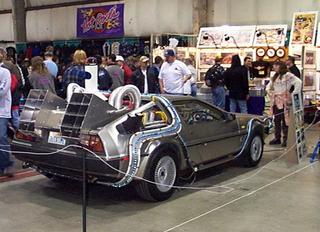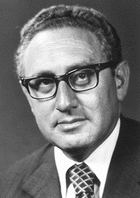Recycling, Bush style
from the newsobserver.com:
With that in mind, a few suggestions for additional re-cycling from past conflicts:
Body armor:

Urban assault vehicles:

And, while you're at it, war criminals:

CHERRY POINT MARINE CORPS AIR STATION -- Earlier this month, a pair of hulking transport planes touched down and disgorged the newest additions to the Marine Corps helicopter fleet: three MH-53E Sea Dragons that had been sitting in an aircraft "boneyard" in the Arizona desert for about a decade.The Bush Administration's two-quagmire strategy is causing problems in all sorts of unexpected areas. But it is nice to see that the resourceful military is finding creative and environmentally aware ways of dealing. After all, re-use is just about the greenest virtue.
The civilian maintenance workers at Cherry Point's Naval Air Depot will clean, strip and transform the worn-out helicopters into the Marine version of the aircraft, the Super Stallion, a process that could take 20 months. This is the first time that retired choppers such as these have been resuscitated, and the challenges are unique: Not only have the helicopters been outside about 10 years, but the Super Stallion has evolved with continuous major upgrades.
Restoring the helicopters, which have been out of production since 1999, is an extraordinary step; but the Marines have little choice: They're running out of big choppers.
The wars in Afghanistan and Iraq are taking a bite out of their deteriorating helicopter fleet, not just in aircraft lost -- six Super Stallions have been destroyed in crashes since 2001 -- but also in hours that the helicopters are flying.
"They're coasting on legacy fleets," said Richard Aboulafia, an analyst with the Teal Group, an aerospace and defense consulting company in Fairfax, Va. "They planned to coast indefinitely ... and it would have worked just fine if it hadn't been for Afghanistan and Iraq."
The Super Stallion is the Corps' only heavy lift helicopter, and its workhorse. It moves large amounts of cargo and troops long distances and performs rescue missions. It can carry up to 55 Marines and can use slings to transport heavy equipment such as Humvees or even small armored vehicles.
The Marines' fleet of 150 is working hard.
The two wars have pushed helicopters into a bigger military role than at any time since the Vietnam era. In Iraq, choppers are vital not only for the usual reasons -- because they can quickly move troops, supplies and equipment between points without runways -- but also because roadside bombs have become the insurgents' deadliest weapon. In Afghanistan, roads are few, and broad swaths of rugged territory are impassable by ground vehicles.
A replacement helicopter, designated the CH-53X, is in the works; but it is not far along. The Marines hope to sign a contract this fall to begin development, said John Milliman, a helicopter acquisition programs spokesman at Patuxent River Marine Air Station in Maryland.
It will probably be at least 2015 before the replacement choppers are deployed, he said. But the service life of a Super Stallion is 6,120 hours in operation, and current estimates are that the Corps will have to start parking about 15 copters a year in 2010.
That leaves five years in which the Marines' fleet of heavy lift helicopters will dwindle before replacements start coming into service.
With that in mind, a few suggestions for additional re-cycling from past conflicts:
Body armor:

Urban assault vehicles:

And, while you're at it, war criminals:







0 Comments:
Post a Comment
<< Home